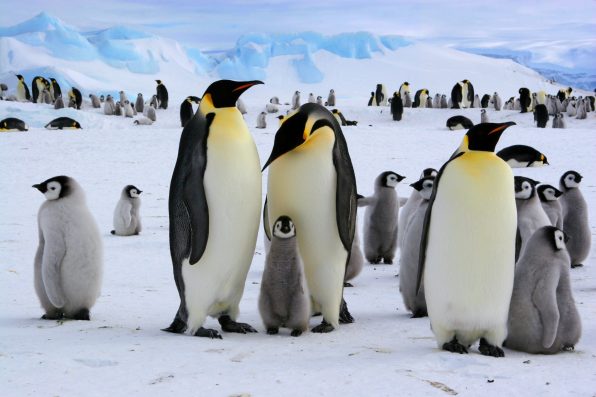Trails Of Waste Spotted From Space Led To The Identification Of Four New Emperor Penguin Colonies In Antarctica

A scientist was searching satellites for signs of unreported emperor penguin colonies in Antarctica when he made a shocking discovery.
Thanks to trails of poop smears spotted from space, a total of four previously undiscovered emperor penguin colonies were identified. This brings the overall number of breeding colonies for the species to 66.
According to Peter Fretwell, a study author and a scientist at the British Antarctic Survey, the finding was important because it helped place the distribution and locations of the colonies, which, in turn, will help researchers observe how the penguins adapt to climate change.
Fretwell combined data collected between 2018 and 2022 by the Maxar Worldview-2 satellite and the Sentinel-2 satellite from the European Space Agency.
The brown smears of the penguins’ excrement could be seen even all the way from space. It is likely that the colonies Fretwell found have existed for years.
The groups were mostly small, with each having less than 1,000 breeding pairs. A few of the colonies were close to already-established penguin hotspots.
One of the newly discovered colonies was located on the coast of Marie Byrd Land in West Antarctica, around 31 miles from an abandoned Russian research facility. During its time in operation, the facility never had any official records of emperor penguin sightings.
Another new colony site was on the northern side of the Lazarev Ice Shelf. A larger colony had once been reported there but was declared extinct in 2019.
“It seems highly probable that the newly reported is a movement of the old Lazarev colony, possibly due to the extension of the ice tongue or a change in sea-ice conditions,” said Fretwell.

BernardBreton – stock.adobe.com – illustrative purposes only, not the actual penguins
The findings have boosted the global emperor penguin population by 5,700 pairs. However, the population of the lost Lazarev penguin colony was estimated to have about 4,500 pairs, and the new colony seems much smaller.
Emperor penguins are the largest, in both height and weight, of all the penguin species. They stand up to 4.3 feet tall and weigh up to 100 pounds. Only around 200,000 breeding pairs are left in the wild.
They are among the most threatened species of penguin and are vulnerable to extinction. According to the IUCN’s “Red List,” emperor penguins are classified as “Near Threatened,” which means they are on the brink of becoming an endangered species.
The penguins breed during the coldest time of the year in Antarctica. They raise their young on patches of sea ice.
Yet, due to warming temperatures, the sea ice is melting at rapid rates, putting the species’ survival in danger.
If the current rates of sea ice loss continue, the worst-case scenario is that 98 percent of colonies could disappear by 2100, making them quasi-extinct or unable to reproduce and increase their population size.
The study was published in the journal Antarctic Science.
Sign up for Chip Chick’s newsletter and get stories like this delivered to your inbox.
More About:Animals